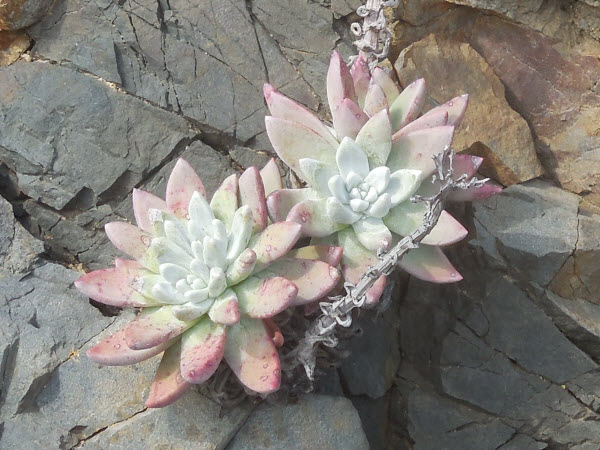Monterey, California
These pictures range from just north of Santa Cruz to Monterey and into northern Big Sur, during the winter months of December through February.
This first picture is taken at Christmas time, one of the more decorated homes, but certainly not unique in the Monterey area!
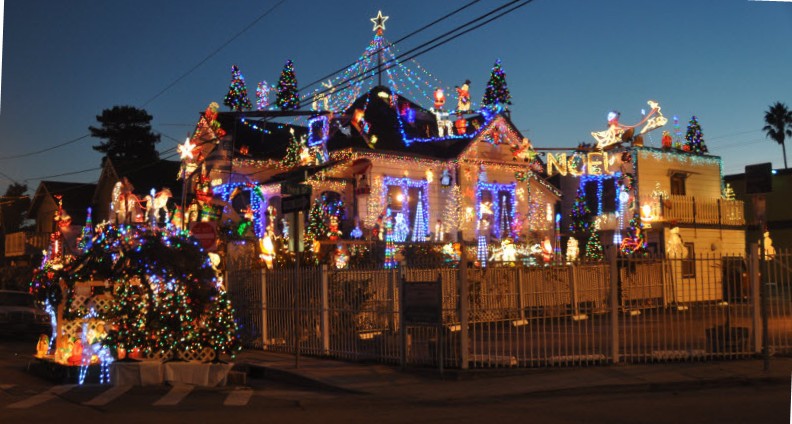
Jack's Peak is on the eastern side of Monterey - a nice hike, and with a good view of Monterey and the bay.
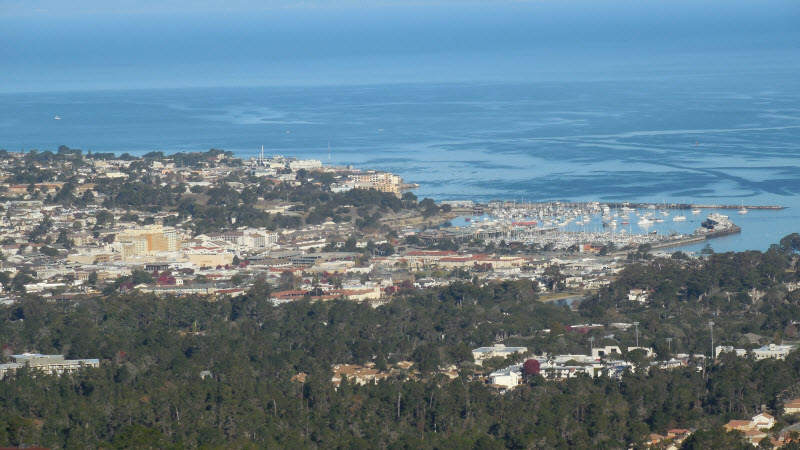
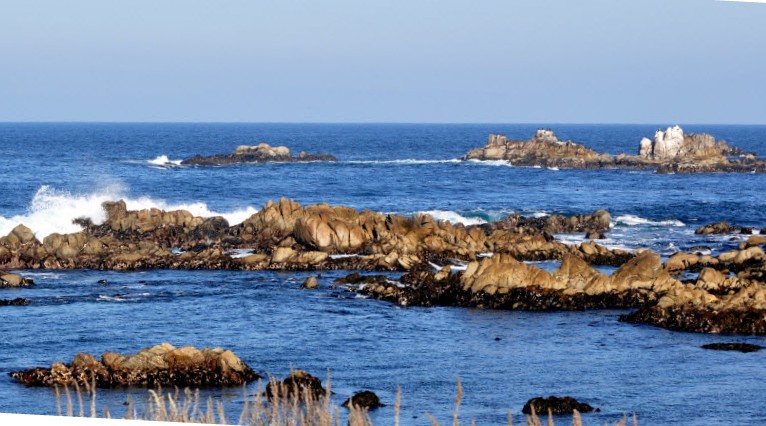
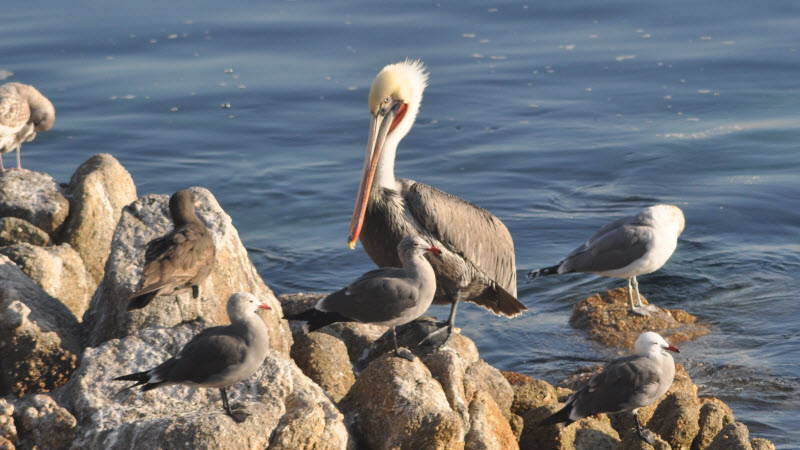
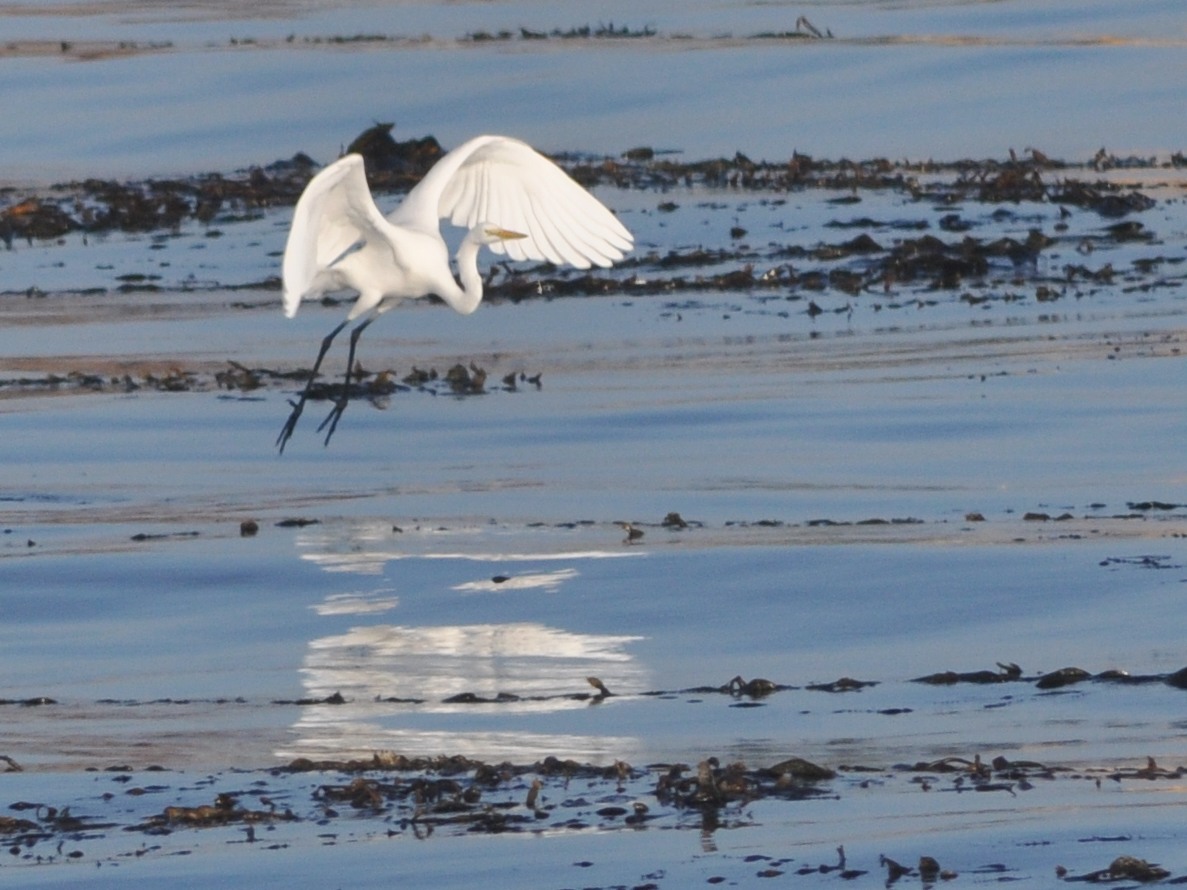
I laugh that Pelicans on the west coast are like pigeons or squirrels on the east coast - but I am an east coast person, so I take pictures of Pelicans!
And an Egret
Jack's Peak - large pine cones.
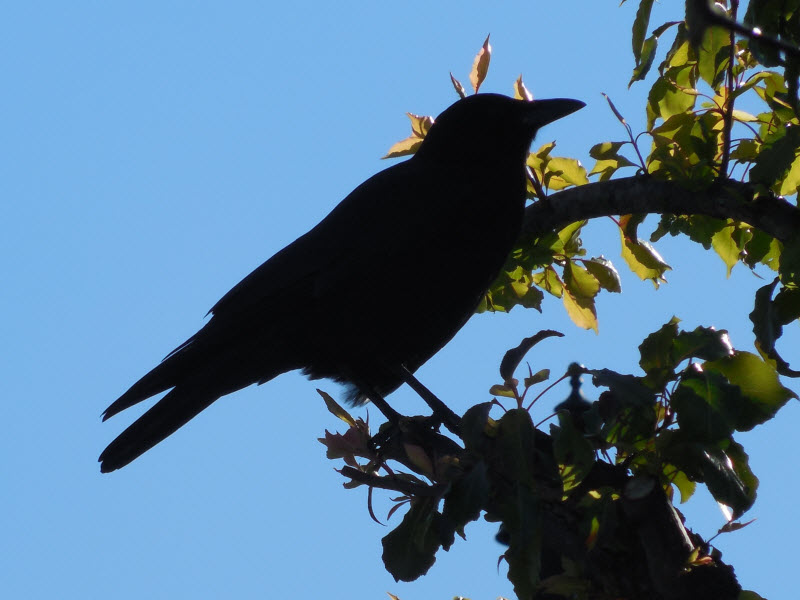
The simple things - a red rock on the beach!
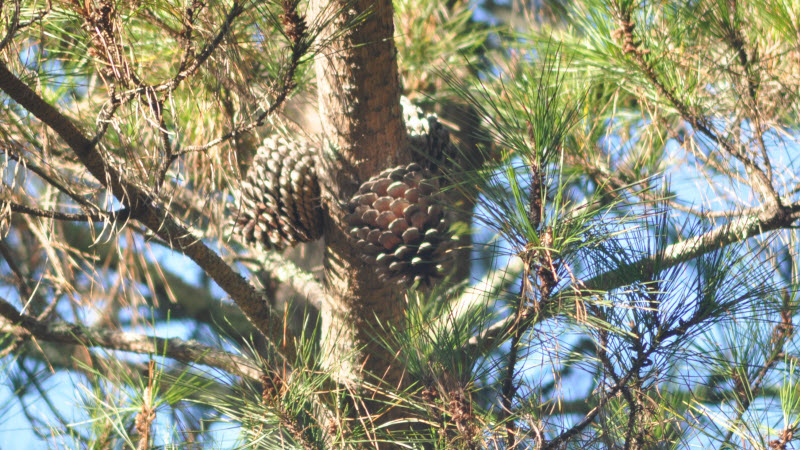
Just a crow...
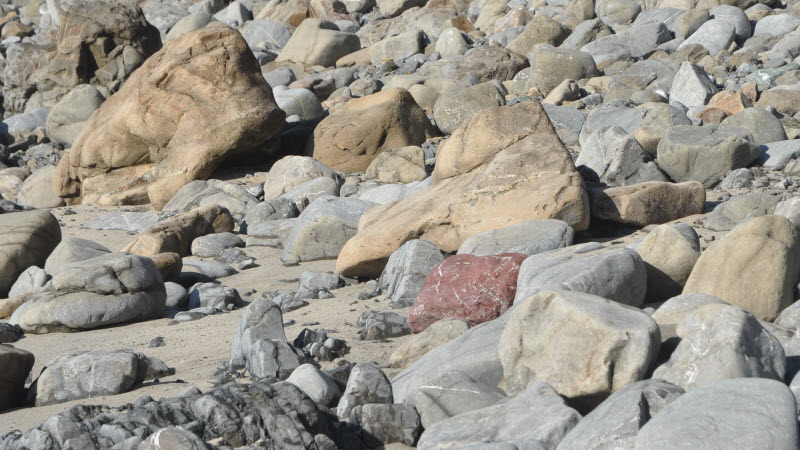
Beard Lichens
In the genus Usnea
I found a very nice write-up of lichens in the Carmel Valley - www.californiaoaks.org - "Lichens and Oaks: A Deep Partnership", Stephen Sharnoff.
And a second interesting page, www.sharnoffphotos.com also by Stephen Sharnoff with 9,000 photographs of which 7,000 are images of lichens.
Clearly there is a lot to know about lichens, and many different types. These are some of the things that I thought are interesting:
- Lichens do not harm trees. And they can benefit trees. They can help ward off fungal infections and invasive insects, and can encourage the presence of animals by offering fodd or material they can use for camouflage or nest building.
- A tree that is dying may have more lichen - because of the higher levels of light on a tree without leaves.
- There are about 1,500 species of lichens in California
- lichens live on sunlight, air and water, and do not need soil. They are slow growing and require a stable surface such as oak bark or a rock.
- Holdfasts - many species have tiny hair-like holdfasts that they use to grab onto the substrate.
Beard lichen is not Spanish Moss - I called it Spanish Moss when I first saw it - but I was wrong! Spanish moss is neither a moss nor a lichen, but rather a flowering plant (angiosperm) in the family bromelilacea (the bromeliads) that grow hanging from tree branches in full sun or partial shade, in southeastern US to Argentina (ref: en.wikipedia.org/wiki/Spanish_moss). And ref solutionsforyourlife.ufl.edu/ - Spanish moss is a bromeliad - a perennial herb in the pineapple family.
Beard lichen on trees at Jack's Peak, not far from the Monterey airport.
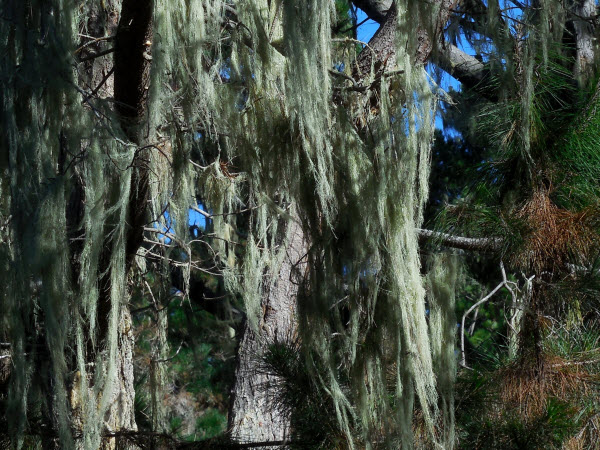
These are live oak leaves, with an abundance of beard lichen.

In one area there was a lot of orange on the trees - I am guessing the orange is also a lichen (does not take long to expose the extent of my ignorance).
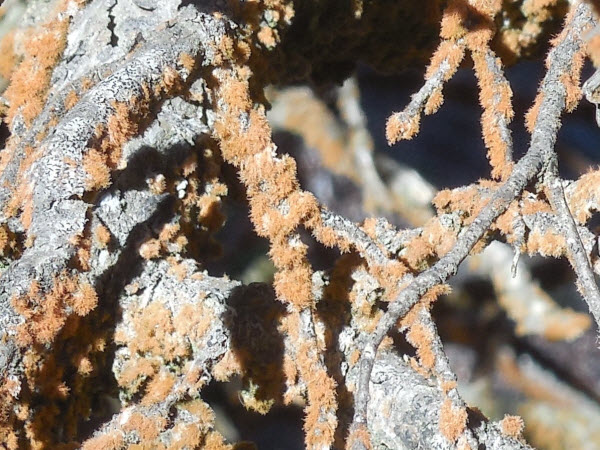
Live oak tree.
The live oak leaf looks more like a holly leaf to me! As we puzzled over the leaf, we found the "hat" of an acorn,
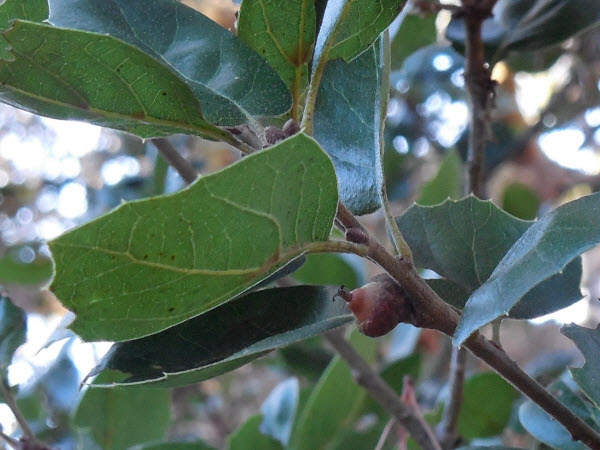
and then an oak gall. On another page I have more information on the oak gall, which is induced by a gall wasp. California oaks host over 200 species of gall wasps, and the gall that develops is apparently unique for each type of wasp.
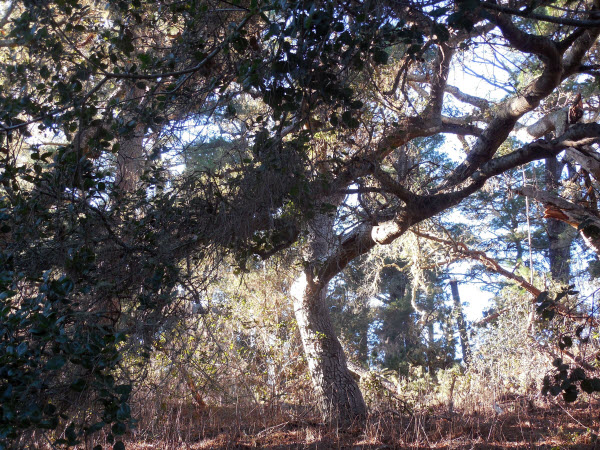

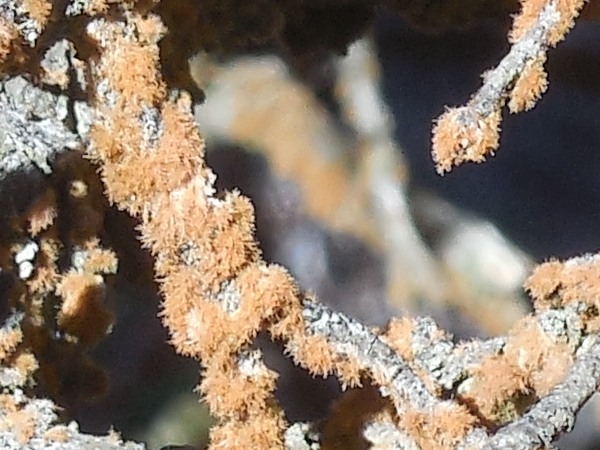
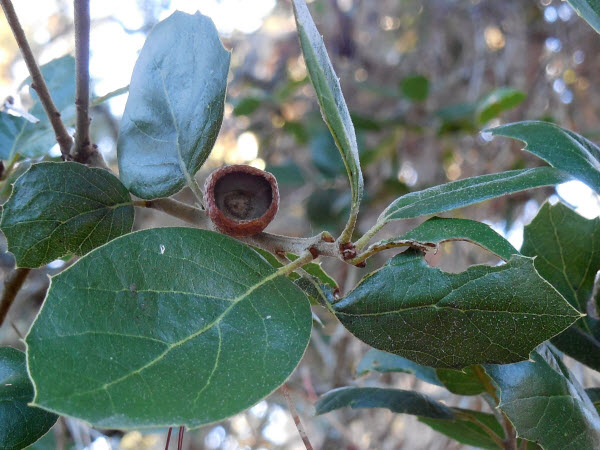
and then a whole acorn,
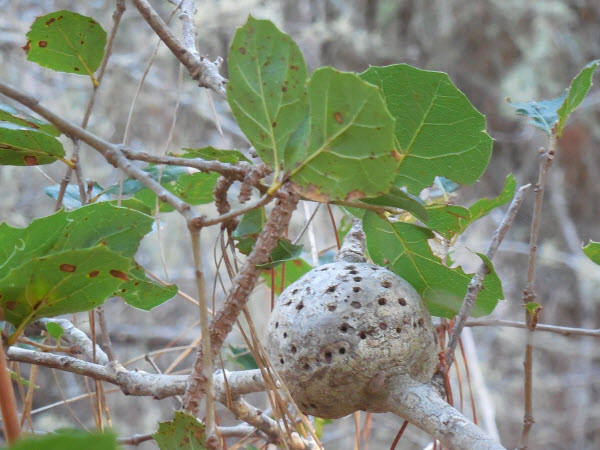
Stepping back to photograph the full tree.
Sea Lions
I felt like such the tourist - could not tell the difference between a Sea Lion and a Seal! But clearly not so easy - seach for "difference between seals and sea lions"! There are many references. Here are two: www.ncaquariums.com and oceanservice.noaa.gov/facts/seal-sealion.html
Better to read the links for yourself, but here are my takehome points:
- Seals, Sea Lions and Walruses are pinnipeds - "fin footed" in Latin
- Visual differences are slight - the biggest giveaway is the head - sea lions have external ear flaps that stick out to either side, seals have only a pinhole. The ear flap is clear in the image below.
- Seals have weak front flippers - they steer with their front flippers and use their hind flippers for propulsion. Sea Lions have long, strong flexible flippers that can support their weight on land, allowing them to walk on all fours in a partially upright position. Sea Lions propel themselves with their front flippers, and steer by pointing their heads, necks and bodies.
- Sea lions are noisy - seals are quieter, vocalizing with soft grunts.
- Seals are better adapted to live in water, while sea lines are able to "walk" on land.
- Seals are less social than sea lions. Sea lions congregate in gregarious groups called herds or rafts - up to 1,500 individuals.
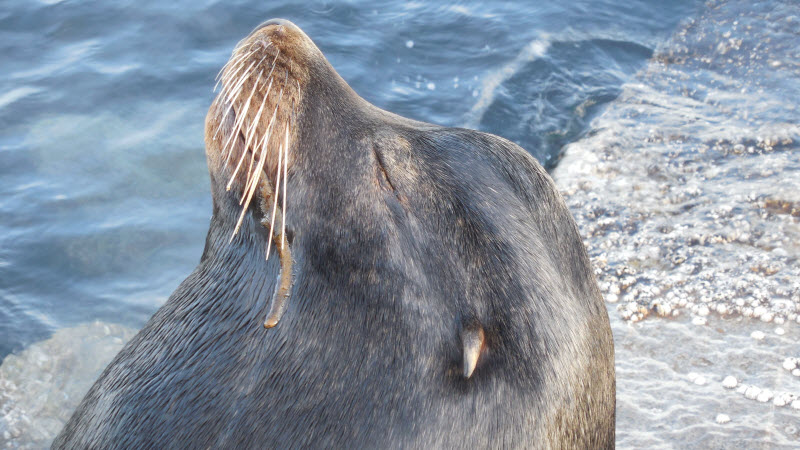
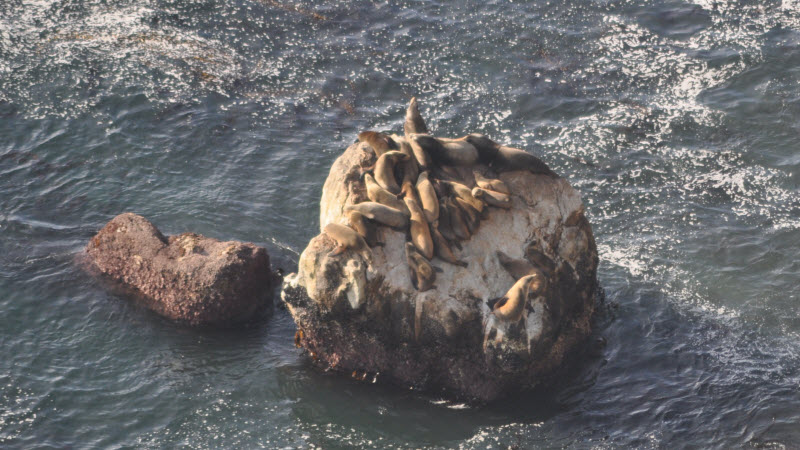
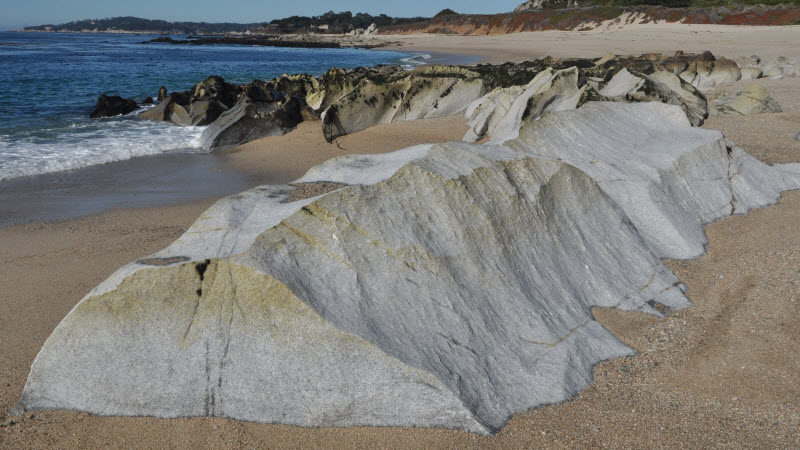
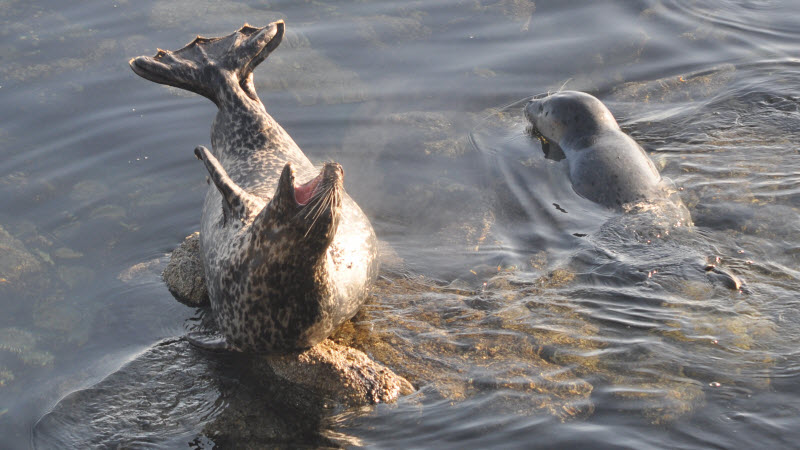
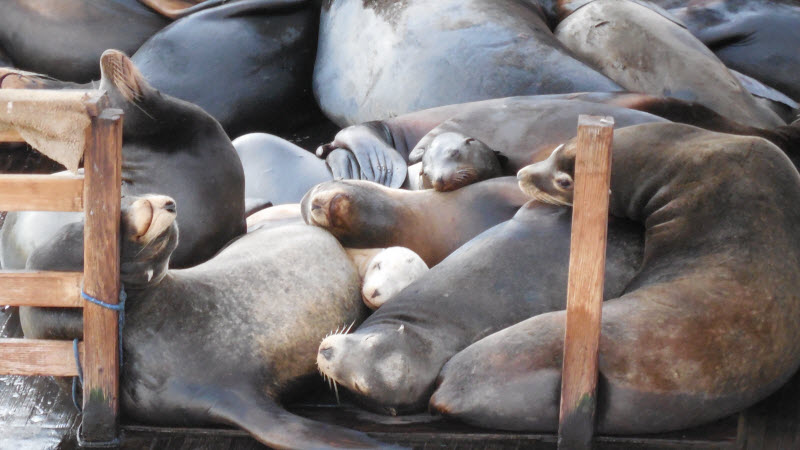
Sea Otter
The sea otters that I have spotted have tended to be too far out to photograph with any satisfaction - I tend to see a small bump for the head and a slight blob for the feet, all but lost in a field of kelp. Just north of Monterey is Moss Landing, where there is a channel leading to the the Elkhorn Slough. A slough is a stagnant swamp, marsh or bog, especially as part of a bayou, and a bayou is a marshy arm of a body of water - in this case the ocean. The Elhorn Slough extends some 6 miles inland and is home to many animals, including sea otters, harbor seals, and many birds. I visited the channel as the tide was coming in, and was treated to a steady procession of sea otters floating in with the tide, and within good range of a telephoto lens.

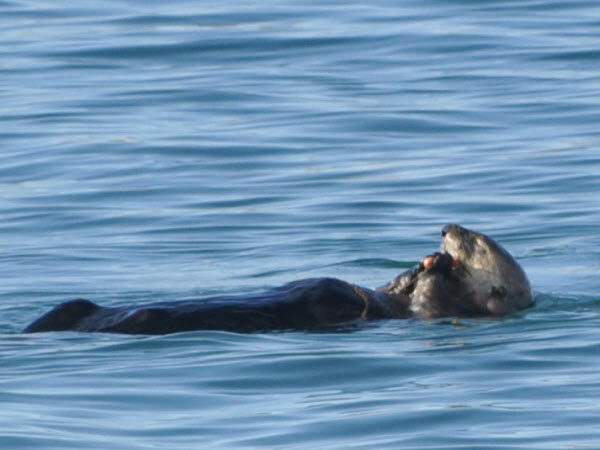
Off of Point Lobos, south of Monterey, there are areas of kelp. Sea otters will wrap themselves in a strand of kelp in order to anchor themselves, and so stay clustered. Two sea otters in this image are visible, showing their head and feet. In most of my pictures these amount to small bumps in with the leafy kelp - amounting to not much to see! But comparing to the photo above, it becomes easier to see the otters in this image.

Here is a larger area of kelp, with at least five clearly identifiable sea otters.
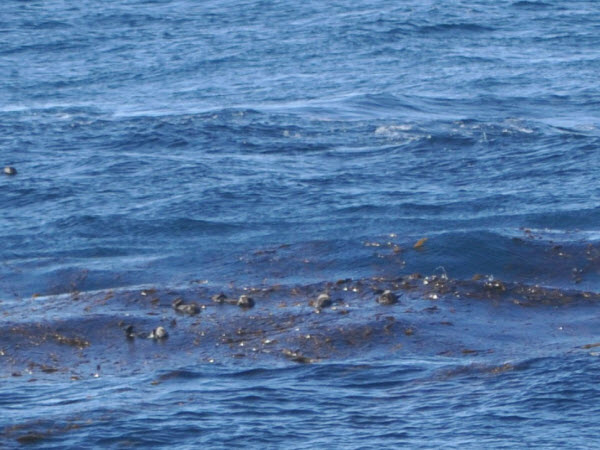
The same body of kelp, at lower magnification - just a patch of kelp within the ocean.

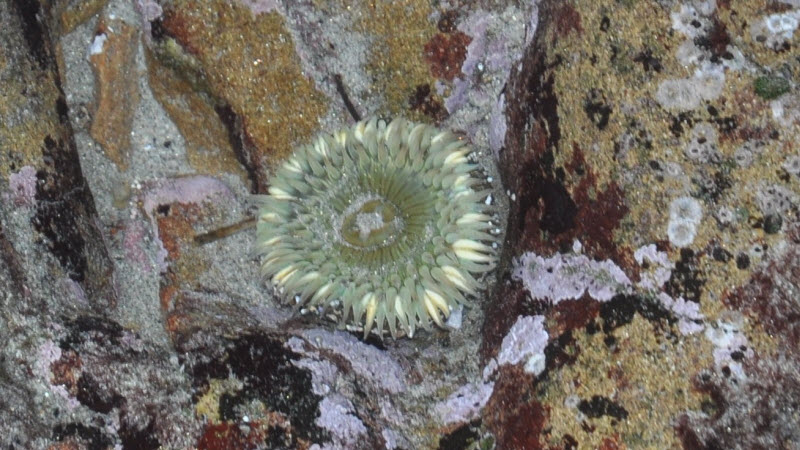

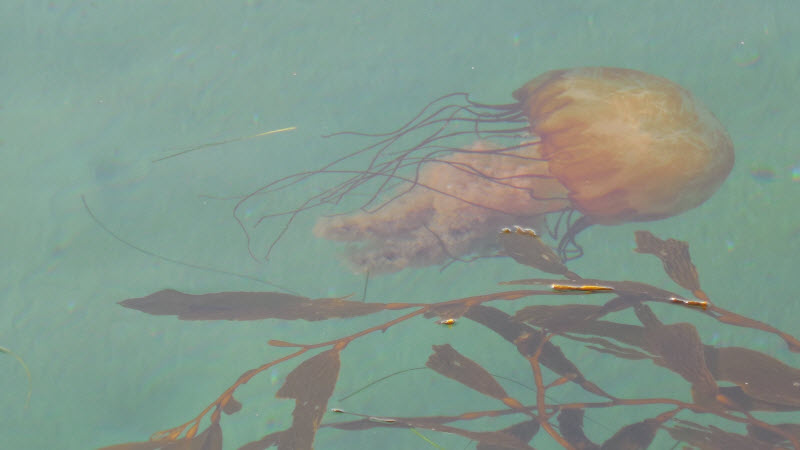

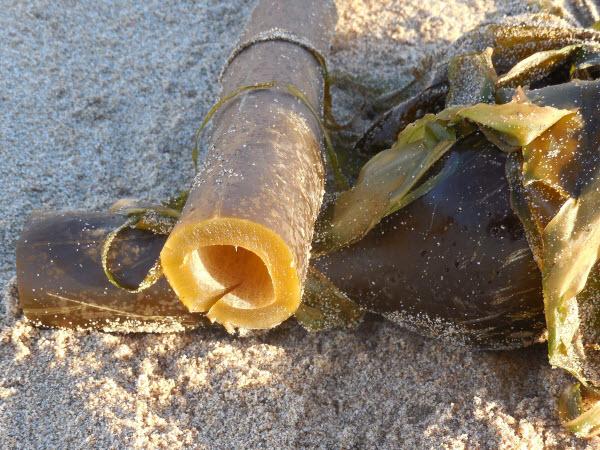
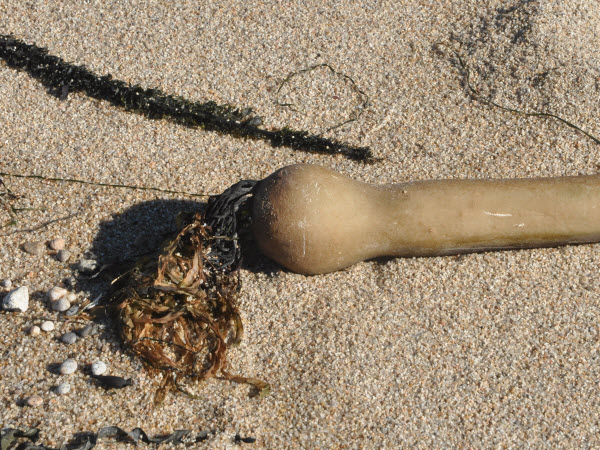
Kelp
Kelp seems a surprisingly big topic in Monterey. And also a significant presence. Kelp (seaweed, of the brown algea family) anchors via a holdfast to the ocean floor and grows up on a long stalk, with the leafy part of the plant at top. My introduction to kelp was the stalk segment, the stipe, on the beach. The stalk is tapered, with one end clearly of much larger diameter than the other.
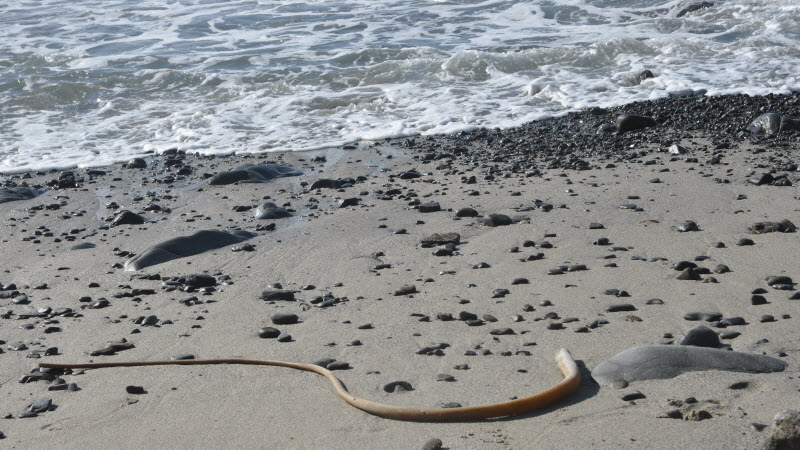
There is a bulb at one end - the fat end, and the stipe then tapers. Naturally I thought the fat end, which seemed to have roots, was the end attached to the ocean floor, and the taper the extended up to the surface. And of course I was exactly backwards - the fat end is the bulb end, and is full of air - allowing it to float. The tapered end connects to the holdfast - the roots at the ocean floor that are wrapped around a rock or other structure to anchor the kelp.
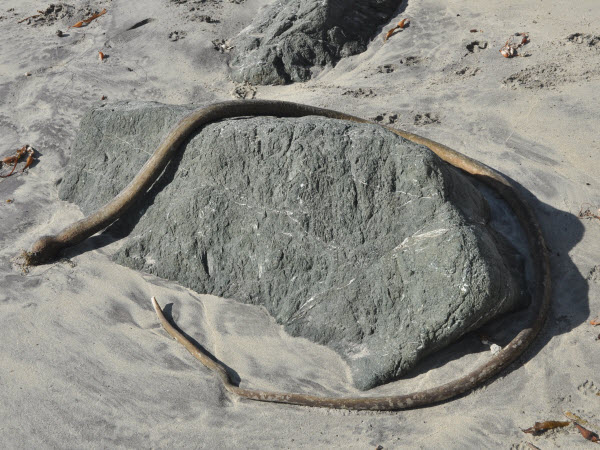
A closer look at the bulb -

and the bulb end of the stipe broken to show the interior of the structure.

But it turns out that the kelp is anchored by a root ball, in this case growing around a rock - and somehow deposited on the beach from the ocean floor - I presume a storm. This one was on Pfeiffer beach.
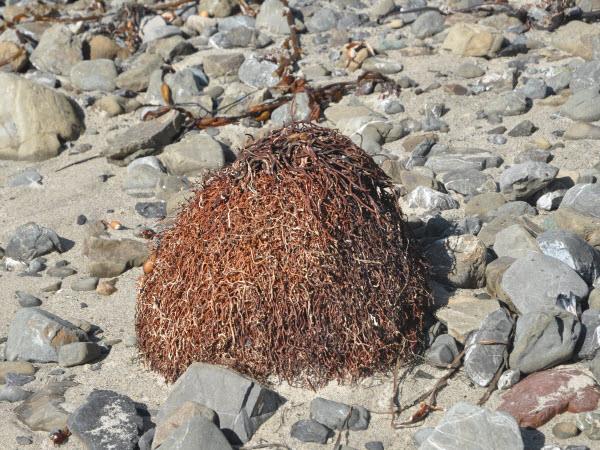
We found an area where the kelp was plentiful, and at low tide it was easy to see.
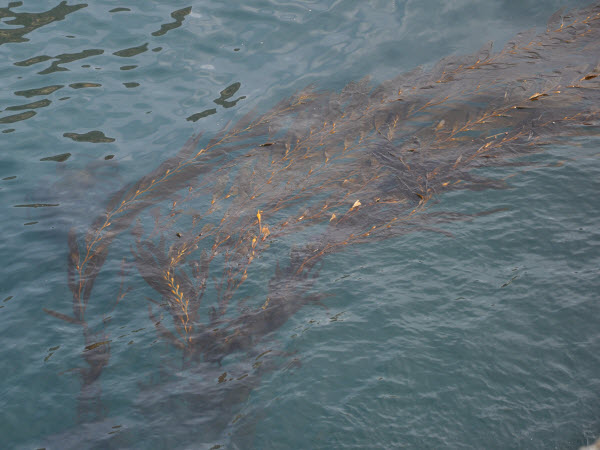
In the image above nodules can be seen, filled with air and holding the leaves to the surface. Those nodules are also plentiful on the beach -
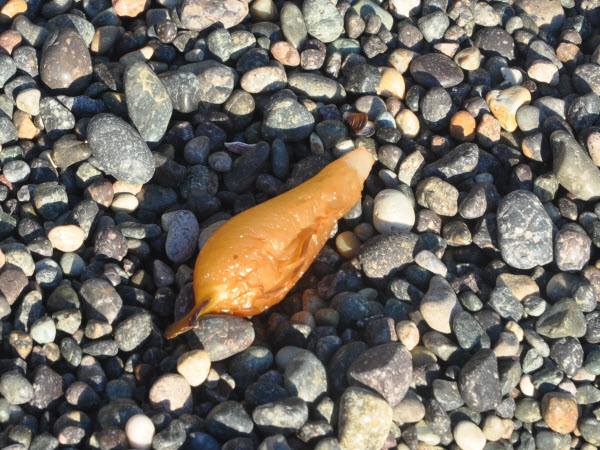
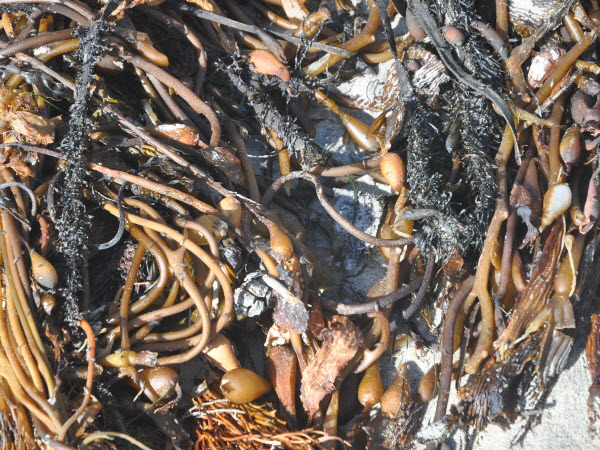
And circling back - the bulb at the end of the stalk is at the top - not the bottom. The wall has a surprisingly thick wall, but is hollow and air filled, and the bulb at the end is the top, anchoring the leafy material.
The color does not come through as I remember - a very pretty and vibrant blue flower, draped over the rocks. I have not found the name, yet.
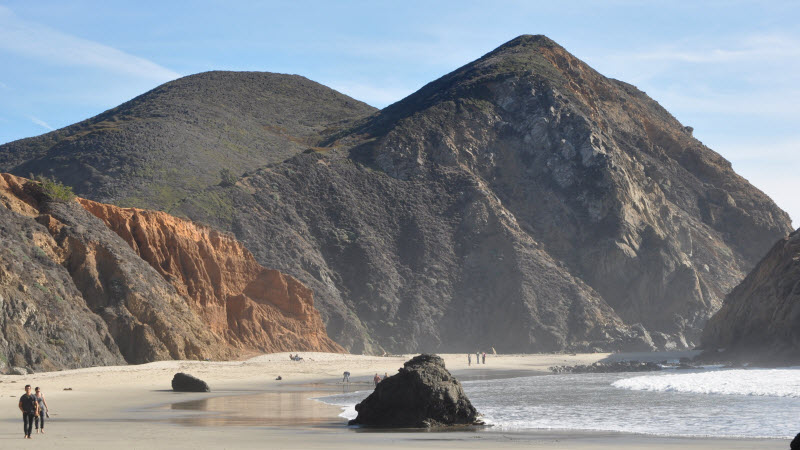
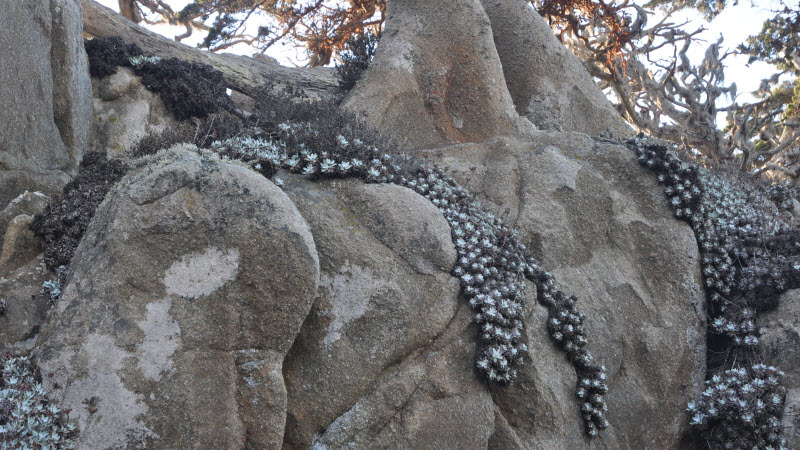
Vernal Pool
A natural pool high on the bluff overlooking Monterey bay, in Pacific Grove - the intense green really catches my eye. This is high enough that the water is more likely from rain than ocean, and not so salty - but I don't know! And probably too small to really be considered a vernal pool. But does meet the basic definition of a "depression in areas where a hard underground layer prevents rainwater from draining downward into the subsoils" (https://www.wildlife.ca.gov/Conservation/Plants/Vernal-Pools) - except the reference is describing much larger areas that are supporting many plants and other life.
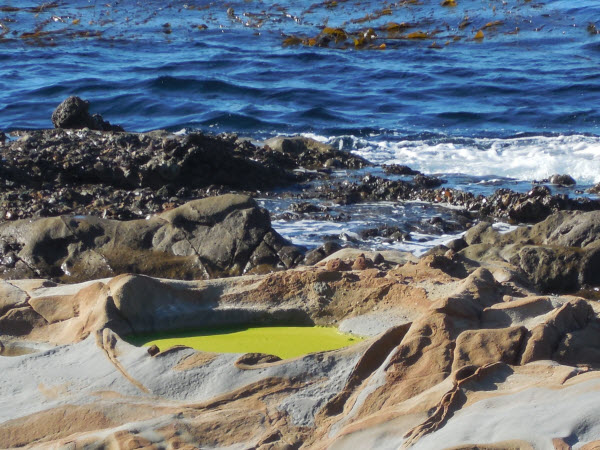
BigSur
Pfeiffer home, located in the northern portion of Big Sur. The home looks out on the ocean and this cove and waterfall.
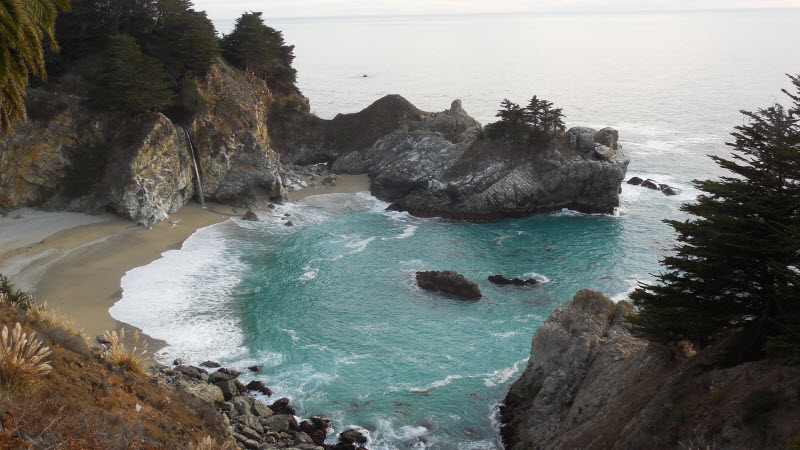
Pfeiffer beach - a natural rock formation.
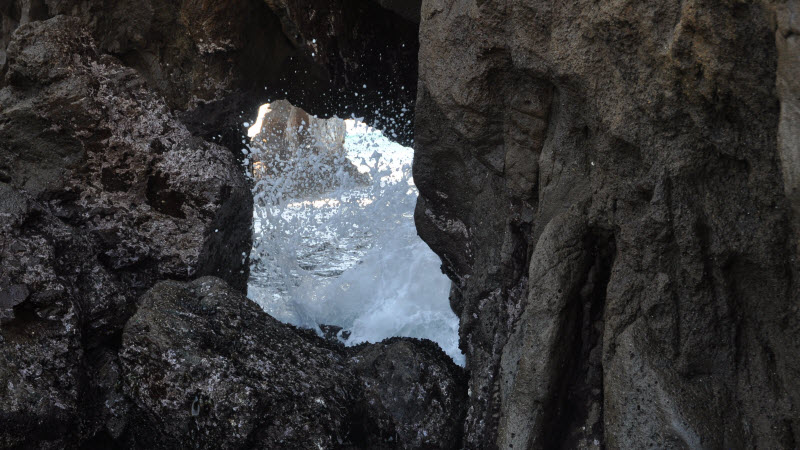
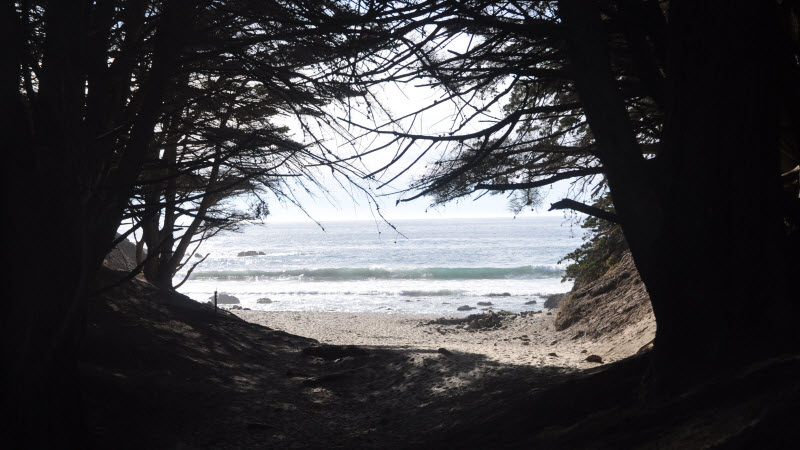
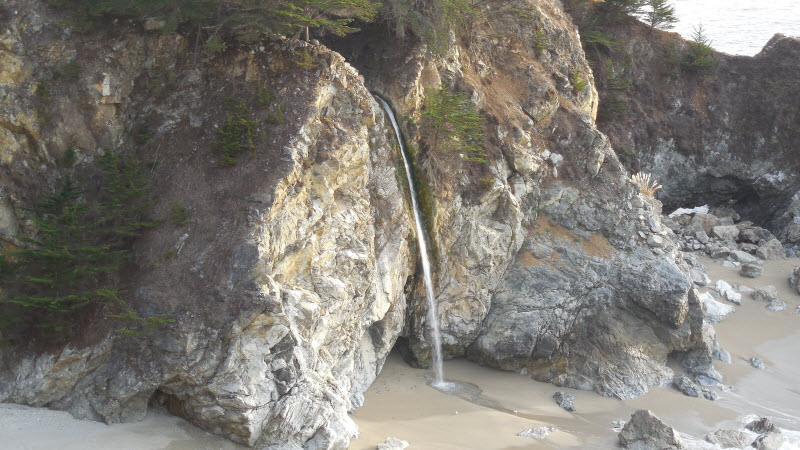

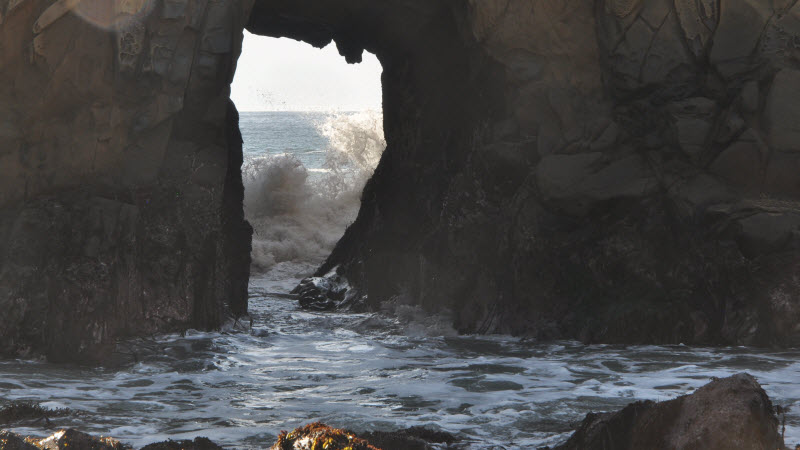
Pfeiffer beach - a small stream coming into the ocean, providing a very pretty area of lush growth and cooler environment.
Pelican
The splash of water would from the bill of the Pelican, flying low across the water.
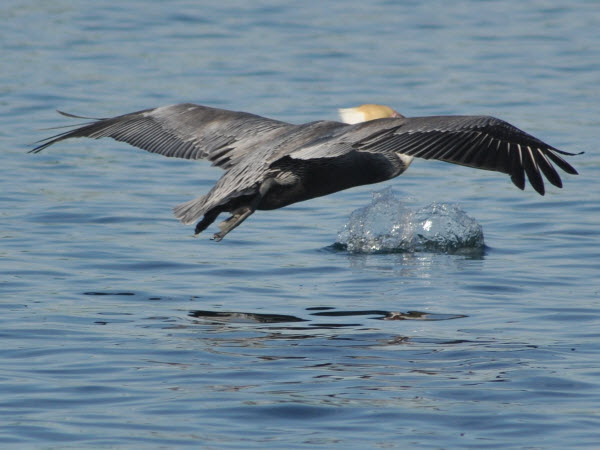
A pelican and a cormorant
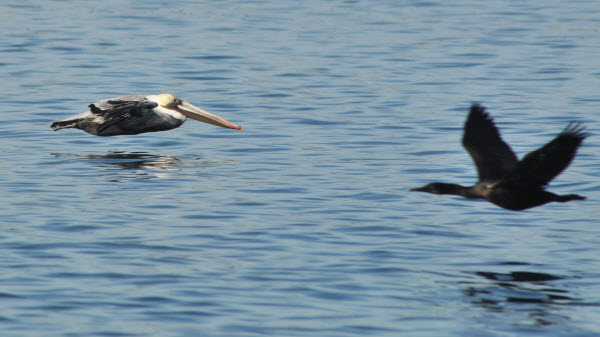
Salinas Valley - Artichokes
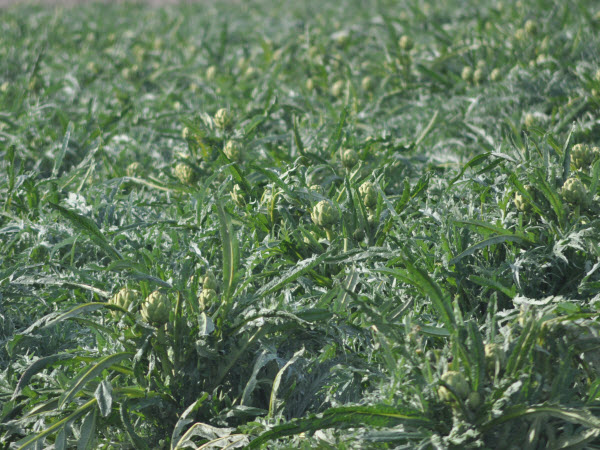
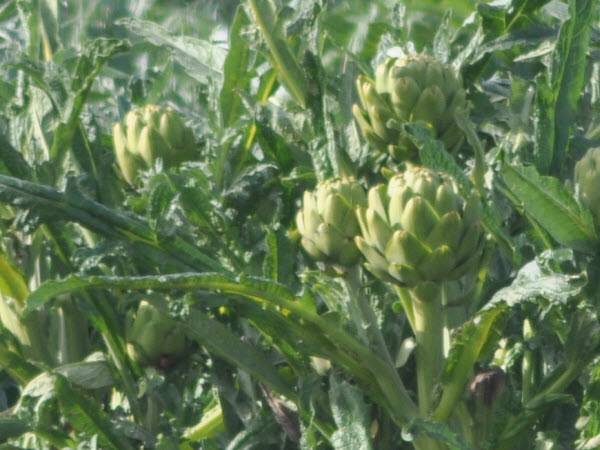

Monterey Flowers
